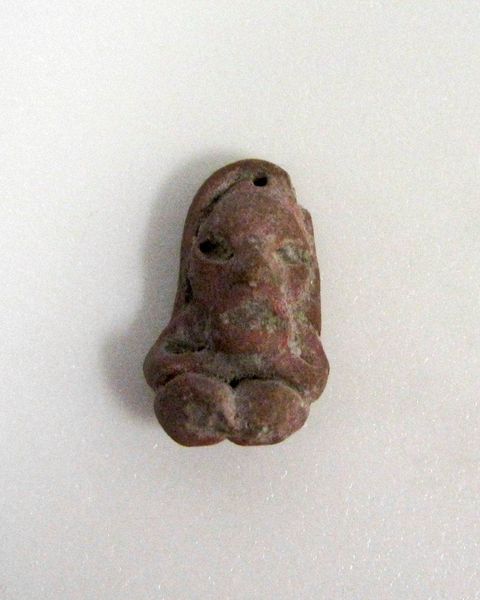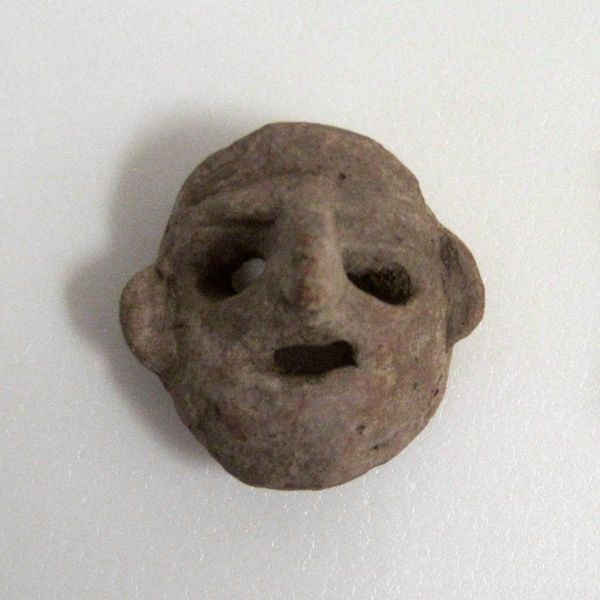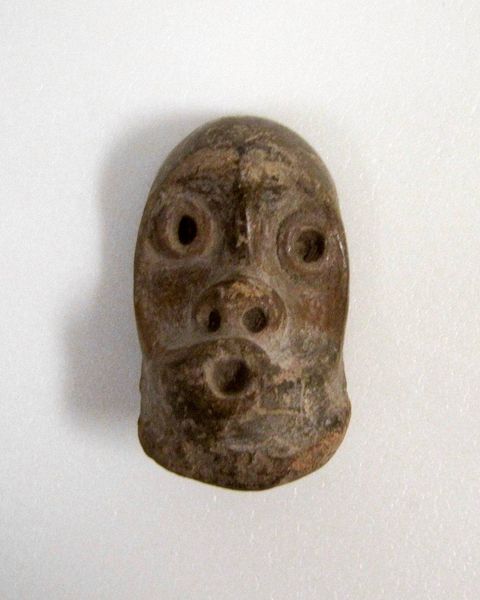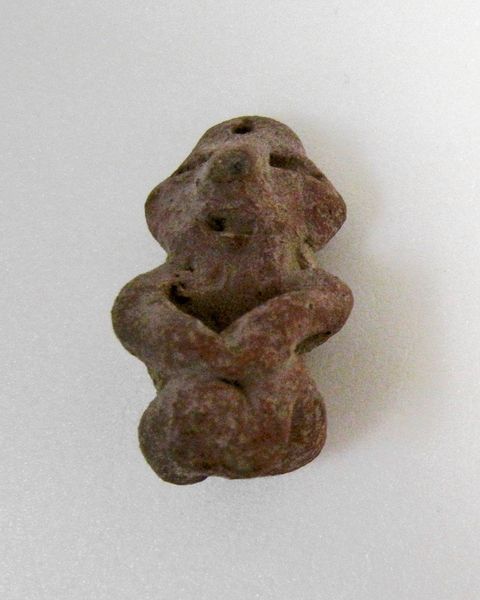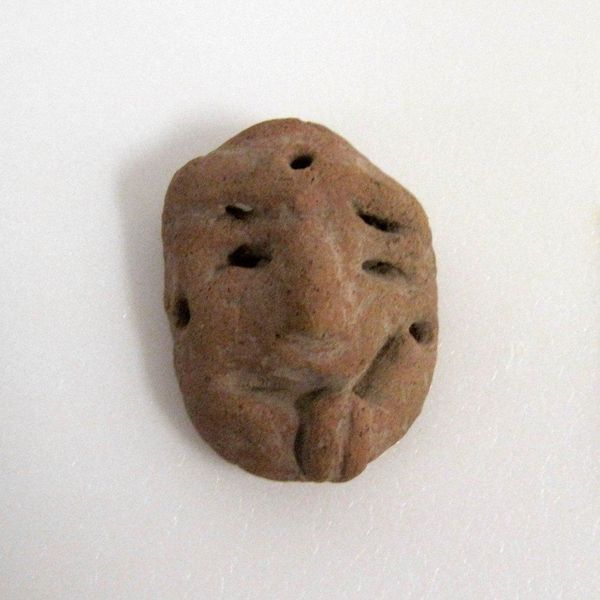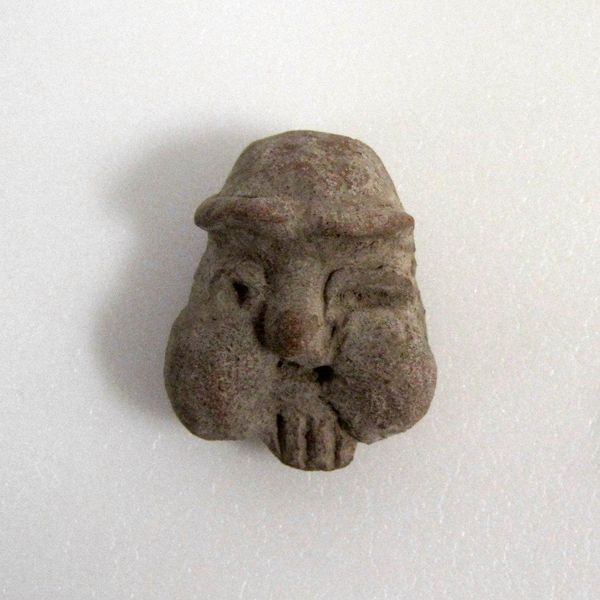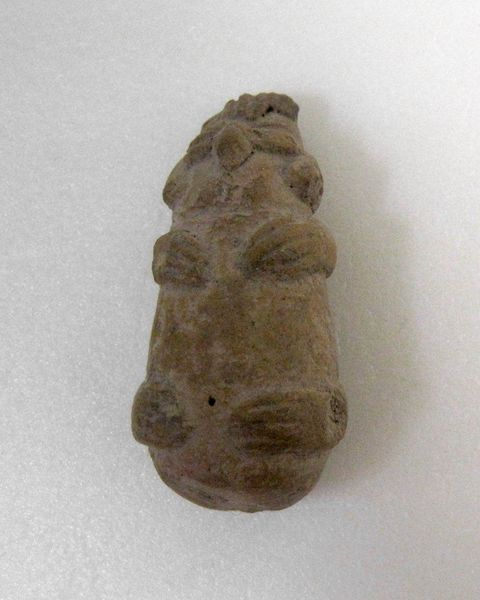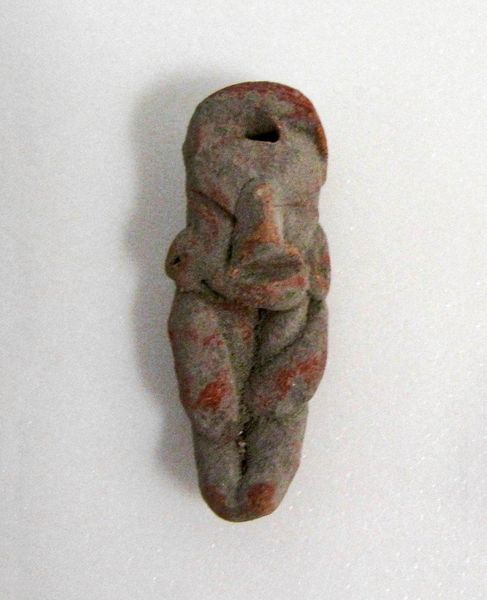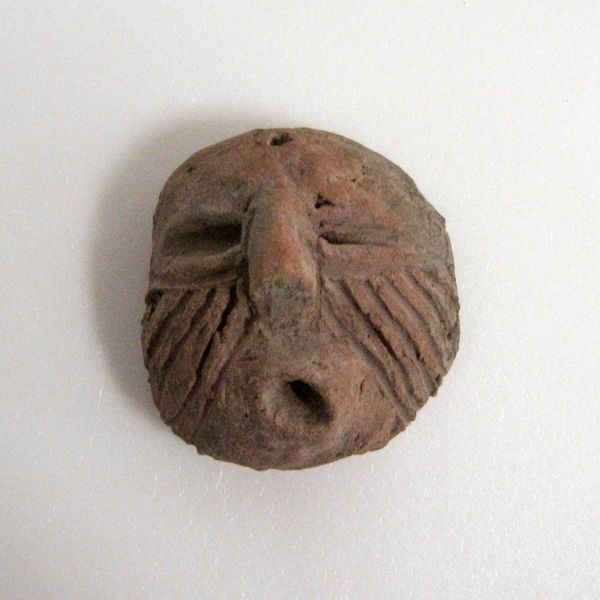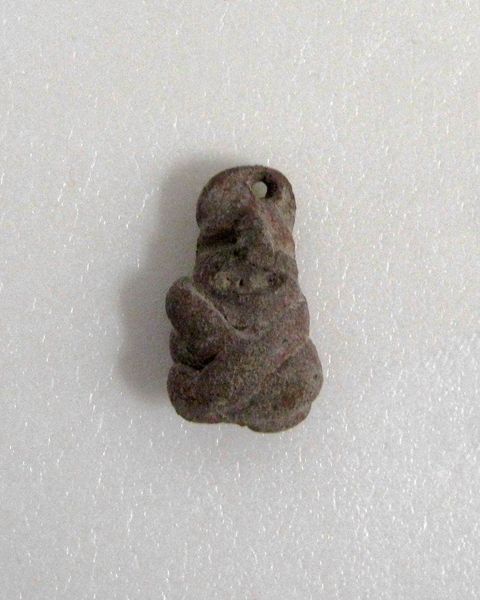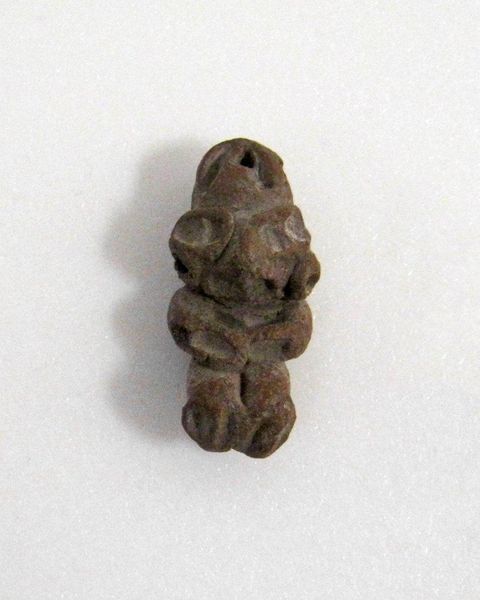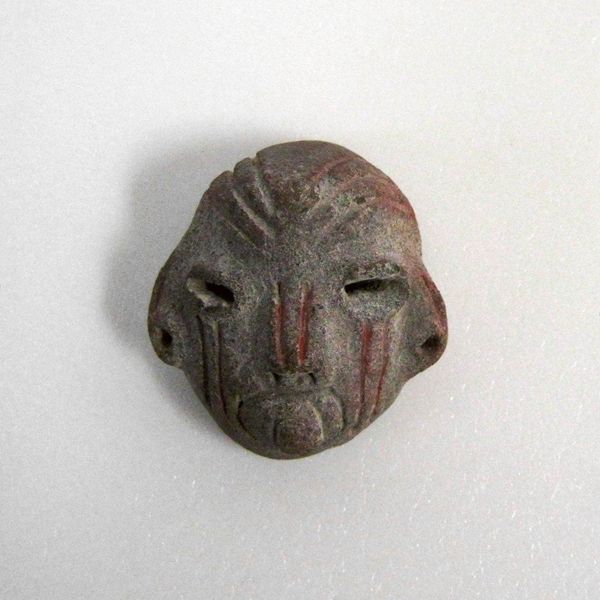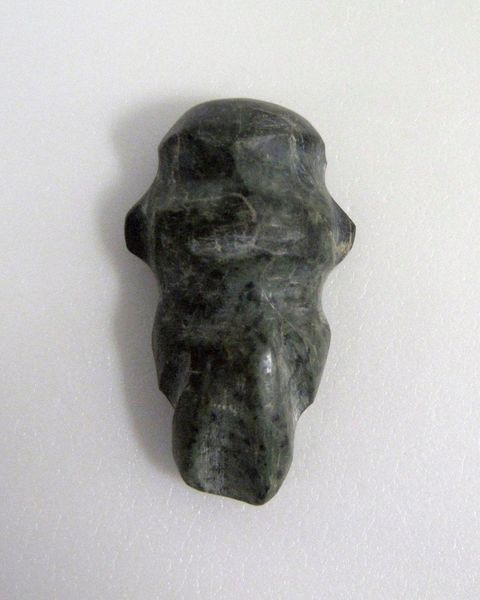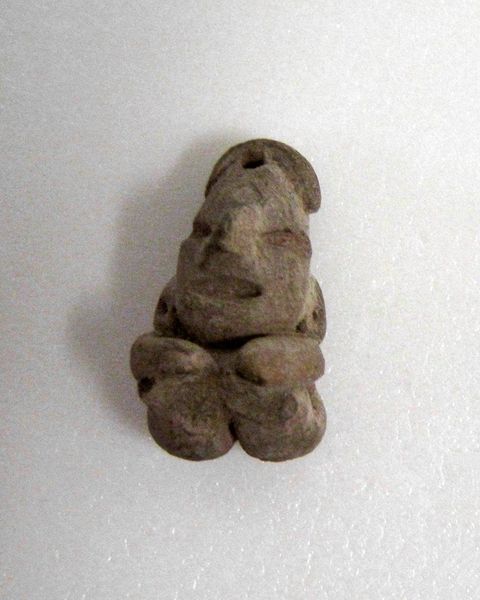
ceramic, earthenware, sculpture
#
sculpture
#
ceramic
#
figuration
#
earthenware
#
sculpture
Copyright: Public Domain
Editor: This small, ancient sculpture titled "Miniature figurine" by Tlatilco, made around 1500 using earthenware, strikes me as incredibly raw and enigmatic. What layers do you see beneath this simple, earthy form? Curator: The figurine’s crude nature is precisely its power. Notice how the features, though simple, are deeply evocative. These images acted as powerful links between the living and the spirit world. Consider what this small ceramic portrait might have meant to the people who created and used it. Editor: Spirit world... so it's a talisman? The minimalist carving is thought-provoking; it invites a projection of emotions and inner meanings, don't you think? Curator: Precisely! The roughly hewn nature doesn’t detract; rather it amplifies the feeling. Faces, even simple ones, function as powerful mnemonic devices. Ask yourself what memories or beliefs this form may have embodied. It's fascinating how this ceramic figure embodies psychological and spiritual power. How do you perceive its purpose within its cultural context? Editor: That's a beautiful idea, thank you. Thinking about how simple forms evoke powerful memories… Curator: Visual cues and patterns – a subtle nose shape, an elliptical eye— are symbolic short cuts, reminding the Tlatilco people of ancestors, nature deities, or even a certain view of self. Each indentation probably encoded narratives about continuity and belief. Editor: So, through this tangible form, history and personal stories were preserved! Curator: Yes, symbols, carefully molded, act as visual bridges between the seen and unseen realms. These images held an immediate connection. This simple form invites us to think deeply about the psychological role of representation.
Comments
No comments
Be the first to comment and join the conversation on the ultimate creative platform.
